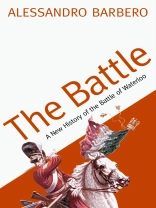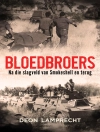A vivid and original reconstruction of the Battle of Waterloo.
On the afternoon of 1 March, 1815, a fleet of ships dropped anchor off the southeast coast of France. After ten months in exile on the island of Elba, the Emperor Napoleon had returned to reclaim his throne. European chancelleries responded by immediately preparing for war. Only one year earlier, four great powers – England, Austria, Russia and Prussia – had combined to defeat Napoleon and now, these four countries made a pledge to invade France from all sides. Napoleon's only recourse was to rearm, and he quickly marshalled his forces: mobilized the National Guard, began mass production of muskets and bought or confiscated all available horses. On the Allied side, by the end of spring, only the Duke of Wellington's troops and the Prussian army, under the command of Field Marshal Blucher, were prepared. The Emperor knew that by attacking the two armies separately, his Armee du Nord stood a good chance of winning. He planned a surprise strike, to destroy the first army he encountered before the other could intervene.
Maintaining complete secrecy over his tactics, he manoeuvred the Armee du Nord close to the Belgian border and at dawn on 15 June, sent the first cavalry patrols over into enemy territory, followed immediately by columns of infantry. Thus begins The Battle, a thrilling new account of the great Battle of Waterloo, which survivors from all sides deemed, in the words of an English officer 'a terrible fight for a terrible stake: freedom or slavery to Europe.'
Over de auteur
Alessandro Barbero teaches Medieval Studies at the Università del Piemonte Orientale. A previous winner of the Strega Prize, Italy's most prestigious literary award, he is the author of Charlemagne: Father of a Continent , The Battle: A New History of Waterloo (Atlantic Books, 2005) and The Day of the Barbarians: The First Battle in the Fall of the Roman Empire (Atlantic Books, 2007).












